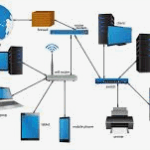The Need For Alert Evaluation In Cybersecurity
It is impossible to design measures to prevent all exploits. Exploits will inevitably evade protection measures, no matter how sophisticated they may be. Sometimes, the best that can be done is to detect exploits during or after they have occurred.
Primary Tools for the Tier 1 Cybersecurity Analyst
Evaluating Alerts
- True Positive: The alert has been verified to be an actual security incident.
- False Positive: The alert does not indicate an actual security incident. Benign activity that results in a false positive is sometimes referred to as a benign trigger.
An alternative situation is that an alert was not generated. The absence of an alert can be classified as:
- True Negative: No security incident has occurred. The activity is benign.
- False Negative: An undetected incident has occurred.
| When an alert is issued, it will receive one of four possible classifications | ||
|---|---|---|
| True | False | |
| Positive (Alert exists) | Incident occurred | No incident occurred |
| Negative (No alert exists) | No incident occurred | Incident occurred |
| Note: “True” events are desirable. “False” events are undesirable and potentially dangerous. | ||
Action Point
Get My 66 Page eBook on How to Run Success Ads ON TikTok for 2,000 Naira. Click Here to Buy.
Get my 90 Page ebook on How to Run Ads on Facebook. Click here to buy now.
PS: Are you a Nigerian resident abroad and you need to send money to your loved ones back home? The stress is over now! Send money to Nigeria using the MonieWorld app. It’s fast, easy and has great rates! MonieWorld is powered by Moniepoint. Sign up with my link
P.S.: If you need private online training on any of the ICT courses I offer here and you are in Nigeria, please send me a DM on my WhatsApp at +2348103180831. Please note that the Training will be 100percent online. It will be delivered via Zoom or Google Meet.
PS: I know you might agree with some of the points raised in this article or disagree with some of the issues raised.
Please share your thoughts on the topic discussed. We would appreciate it if you could drop your comment. Thanks in anticipation.




Leave a Reply